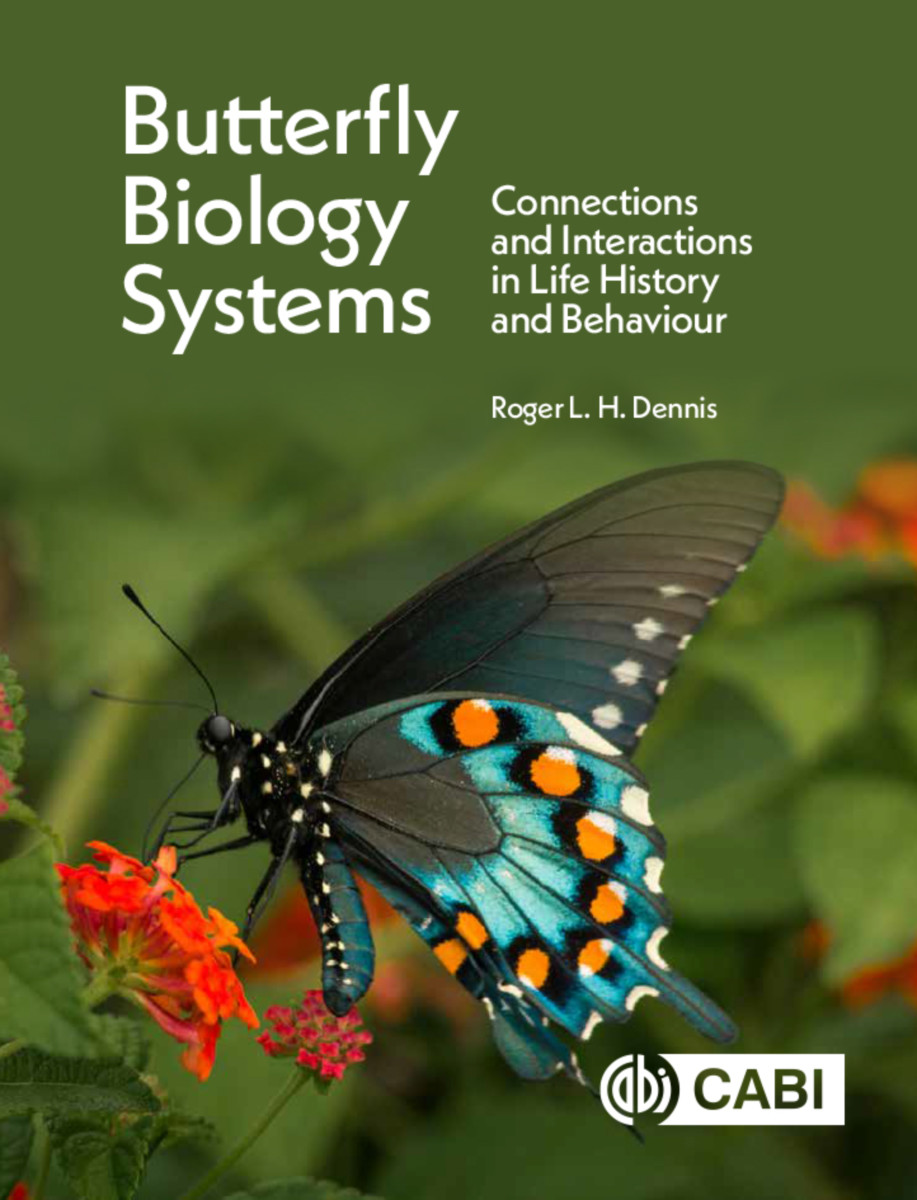Butterfly Biology Systems
Connections and Interactions in Life History and Behaviour
- Publisher
CABI - Published
24th November 2020 - ISBN 9781789243574
- Language English
- Pages 472 pp.
- Size 7" x 9"
Butterflies, among key animals for assessing environmental changes, have consequently also become prominent model organisms for the study of trade-offs in life history and behavioral traits. Examples include factors affecting the size of egg batches, fast or slow larval growth, waiting or searching for mates, migrating or staying put in the habitat, roosting alone or together in aggregations, and the development of different defense mechanisms. The book focuses on the factors and trade-offs leading to the development and evolution of distinct traits emerging in the life cycle of butterflies within their habitats. The reader is taken systematically through research findings in each life history stage, on the links identified between different aspects of butterfly biology that have been discovered, and introduced to novel ideas emerging from taking an integrative view of butterfly life history and behavior.
The book is divided into four sections:
A: Language and concepts of system's theory
B: Perspectives on butterfly biology
C: Butterfly life history - basic trade-offs in reproduction, development and survival
D: Butterfly behavior - interactive adjustments in the habitat
The first section deals with the study of relationships in biological systems. The second is an introduction to key aspects of butterfly biology, such as broad issues in taxonomy, the fossil record, variation in space-time, habitat and niche, and the butterfly body frame. The last two longer sections deal directly with the key puzzles in life history and behavior.
The book has been composed primarily for students and researchers in butterfly biology, but it should be of interest to all those who enjoy observing butterflies. For the researcher into butterfly biology it is supported by an extensive glossary and bibliography and, to encourage incentives for ideas, it is liberally illustrated with diagrams for exploring in greater depth the relationships in butterfly biology.
SECTION A: LANGUAGE AND CONCEPTS OF SYSTEMS THEORY
Chapter A1: Reality, abstractions and systems
Chapter A2: Types of systems
Chapter A3: Structure and relationship in systems
Chapter A4: Systems’ states
Chapter A5: Measurement of relationships in systems
Chapter A6: Catering for taxa and phylogenies
Chapter A7: Systematic reviews of research findings: meta-analysis and evidence-based programmes
Chapter B1: Taxonomic constraints in biological systems
Chapter B2: The time frame in butterfly biology systems
Chapter B3: The space frame for butterfly biology systems
Chapter B4: Habitat: the context for individuals and populations
Chapter B5: The butterfly body frame: basic contrasts in butterfly biology
Chapter B6: Trade-offs and regulation in butterfly biology
Chapter B7: Model taxa
Chapter B8: Butterfly databases
Chapter B9: Basic connections and broad divisions in butterfly biology
Chapter C1: Size, brood number and development: fewer large eggs or more small eggs?
Chapter C2: Conundrum of larval growth: fast and small, slow and large, or neither?
Chapter C3: Alternatives to continuous development: to stay and adjust or leave?
Chapter C4: Single or gregarious living? Host drivers and taxon dependence
Chapter C5: Conundrums in mating: when, how often and how long?
Chapter C6: Income versus capital breeders: Invest now and pay later, or pay as you go?
Chapter C7: Mechanisms for survival: an arsenal for all occasions
Chapter C8: Mimicry: honest and dishonest signals of unpalatability
Chapter C9: Mechanisms extending survival into exploitation
Chapter C10: Adult lifespan: the implications of living for longer
Chapter D1: The context and dimensions for observing individual behaviour
Chapter D2: Basking modes, heat and water balance: adjustments to abiotic conditions
Chapter D3: Adult Feeding – refuelling strategies
Chapter D4: Mate location – finding suitable mates
Chapter D5: Courtship – doing the business
Chapter D6: Roost and rest sites – taking a break
Chapter D7: Egg laying – unloading the next generation
Chapter D8: Larval feeding – body building under duress
Chapter D9: Choosing pupation sites – selecting sites for the final transformation
Chapter D10: Adult anti-predator behaviour – life and death in the habitat
Roger L. H. Dennis
Roger L. H. Dennis has spent 50 years researching butterfly ecology, biogeography and conservation during which he has produced over 220 publications. His previous book on a "Resource-based View for Conservation" received the British Ecological Society's Book of the Year in 2012. A Fellow of the Linnean Society and the Royal Entomological Society, he is currently an Honorary Research Fellow at the NERC's Centre for Ecology and Hydrology, Wallingford, and an Honorary Professor at Staffordshire University and at Oxford Brookes University.


